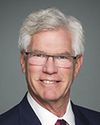I'll just briefly overlap with what Mr. Spratt was saying in terms of access to firearms.
It's important to remember that in order to legally possess a restricted firearm—and handguns are largely restricted; some are prohibited, most restricted—you need to, of course, pass significant scrutiny, including a background check and references check. In fact, your name is run daily through a database, the FIP database, which will show flags for mental health, criminality, domestic abuse and so on. Therefore, there are very strong controls right now in terms of who can legally possess a firearm.
The trouble with handguns—and this is where we get some other conflicting statistics—is that there's a statistic from the PWEU, the provincial weapons enforcement unit, Ontario's joint firearms task force, which found in 2018 that 77% of handguns used in offences came from the United States, therefore, of course, completely bypassing any regulatory regime.
You asked about the regulation part. That's a really interesting question—at least it's interesting when you're a law nerd like Mr. Spratt and I are—because the definition of “firearm”—in other words, what is a firearm—obviously originates in the Criminal Code, but most of the heavy lifting is done, as it often is, by our courts. We have case law upon case law on that question, the very question that should be an important one for firearms regulators, which is, when does a piece of metal become a gun? When does a collection of parts become a firearm, and at what stage are these pieces regulated?
Generally speaking, you have some interpretations taken by CBSA and the RCMP for enforcement purposes, but no real clear answer in the legislation. Whether it's this committee or justice, I think that's something that needs to be looked at in terms of coming up with a definition to what should be a simple question: When does an object become a firearm?
It's not a simple question, but it's one that absolutely has to be examined in the context of the code and the Firearms Act regulations.




